Arise, Japan: Escape from Occupation
During the early postwar period, films distributed by the Civil Information and Education Section (CIE) of the Occupation for screening on Natco projectors were embraced with enthusiasm throughout the country. Most of the films were American and British productions, but some 40 films were produced in Japan. These were democracy education films. Of these, Shu Taguchi (Taguchi Shuji) produced the most films, many of which won awards in international competitions. Did these films actually help democracy take root in postwar Japan? How did the spirit of documentary film production, infused with affection for Japan and passed down from Shu Taguchi to his son, Yasushi, change as Japan grew into an economic power?
Shu Taguchi Productions 1
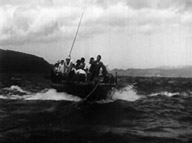 Men Who Fish
Men Who Fish
(Sunadoru hitobito)- 1950 / Japanese / B&W / 35mm / 25 min
Production Company: Shu Taguchi Productions
Source: National Film Center (The National Museum of Modern Art, Tokyo)
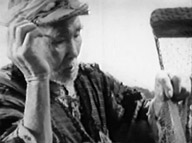 A promotional film for fishery law reforms that freed fishermen from the control of fishing bosses. The film was praised for avoiding the tone of a PR film. Some scholars suggest that the film was influenced by Robert Flaherty’s Nanook of the North. It is known that prints of the English version are extant, but we will screen the Japanese version. The film won first prize at the USIS (U.S. Information Service) World Film Competition. In this film, on which Okazaki Kozo served as cameraman, the fishermen’s vibrant presence fills the screen.
A promotional film for fishery law reforms that freed fishermen from the control of fishing bosses. The film was praised for avoiding the tone of a PR film. Some scholars suggest that the film was influenced by Robert Flaherty’s Nanook of the North. It is known that prints of the English version are extant, but we will screen the Japanese version. The film won first prize at the USIS (U.S. Information Service) World Film Competition. In this film, on which Okazaki Kozo served as cameraman, the fishermen’s vibrant presence fills the screen.
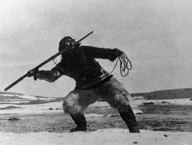 Nanook of the North (sound version)
Nanook of the North (sound version)
- USA / 1922 / English / B&W / 16mm / 50 min
Director: Robert Flaherty
Source: Yamagata Documentary Film Library
One of the masterpieces in the history of documentary film. People who struggle against nature are depicted, along with harmony and coexistence with nature. The YIDFF 1989 catalogue noted: “[Flaherty’s] philosophy of the kinds of principles that must be maintained is clearly in evidence. The film transcends the conception of a mere documentary film.” This film inspired Taguchi Yasushi to become a documentary filmmaker, and cinematographer Okazaki Kozo said that he learned a great deal from Flaherty’s films.
Shu Taguchi Productions 2
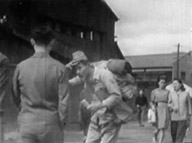 Can Japan Rise to Its Feet?
Can Japan Rise to Its Feet?
(Tachiagareruka Nippon)- Circa 1947 / Japanese / B&W / Video (Original: 35mm) / 14 min
Production Company: Shu Taguchi Productions
Source: Taguchi Yasushi
Shu Taguchi served as New York bureau chief for the Nippon News Film Company and, during the war, as Manila bureau chief. This film mourns over post-defeat Japan and calls for the revival of the nation. While displaying impatience with the state of postwar Japan and mistaken notions of democracy and liberalism, the film sounds alarms out of hope and anticipation. Can Japan actually recover from its wartime experiences? Open your eyes and rise up, Japan!
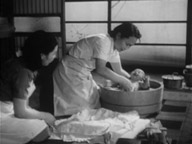 Model Health Center
Model Health Center
(Atarashii hokenjo)- Circa 1949 / Japanese / B&W / Video (Original: 35mm) / 20 min
Production Company: Shu Taguchi Productions
Source: Documentary Film Preservation Center
A CIE production. An easily understood visualization of the role of a regional health center, it was made to help free Japan from stubbornly persistent conventional notions of hygiene. Many of the CIE productions, especially those made in Japan, were produced with a similar approach. This film is not well preserved, but the soundtrack is easy to understand.
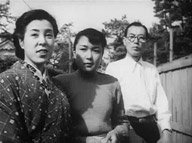 It Happened in Our Town
It Happened in Our Town
(Wagamachi no dekigoto)- 1950 / Japanese / B&W / 35mm / 15 min
Production Company: Shu Taguchi Productions
Source: National Film Center (The National Museum of Modern Art, Tokyo)
A CIE production about the problem of garbage and hygiene in a certain district. A dispute takes place among residents, as a result of garbage that was dumped in a river. But as an investigation proceeds, other problems come to light, including inadequate municipal funding. The residents develop constructive ideas and petition the mayor. Awareness spreads that these are citywide problems of concern to all.
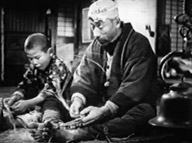 This Land Is Mine
This Land Is Mine
(Watashi no daichi)- 1951 / English / B&W / Video (Original: 35mm) / 17 min
Production Company: Shu Taguchi
Productions Source: Taguchi Yasushi
It was thought this film might have been shot in Yamagata. Since the film itself has been lost, we will screen a transfer from a newly discovered VHS video of the English version of this CIE film, found in the possession of Taguchi Yasushi. The connection to Yamagata was apparently that Taguchi’s brother Oson (an actor and screenwriter at the Shochiku Kamata studio) took refuge here during the war. The Yamagata Shimbun and the Tendo town hall appear in the film. The place is identified as “Yamaguchi” in the English version.
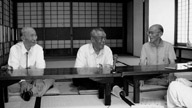 Carrying “Democracy”—Interview: The Yamagata Natco Screening Movement
Carrying “Democracy”—Interview: The Yamagata Natco Screening Movement
(Minshushugi o katsuide)- 2011 / Japanese / Color / Video / 36 min
Production: YIDFF “Films about Yamagata” Program Team
Photography: Chida Hiroko
Editing: Oka Tatsuya
Interview: Tomitsuka Masaki
During the early postwar period, large numbers of democracy education films were screened with CIE-provided Natco projectors. In Yamagata, the screenings involved a mass mobilization, in tandem with the effort to establish community centers in the prefecture. People who were involved with the screenings describe their memories of the time and how the screenings were carried out.
Shu Taguchi Productions 3
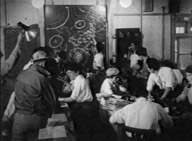 The Eye of A Typhoon
The Eye of A Typhoon
(Taifu no me)- Circa 1954 / Japanese / B&W / Video (Original: 35mm) / 37 min
Production Company: Shu Taguchi Productions
Special Effects: Tsuburaya Eiji
Music: Ifukube Akira
Source: Documentary Film Preservation Center
The first time in the world that the eye of a typhoon was filmed. It took eight months to get the U.S. Air Force to agree to cooperate, and the production faced an economic squeeze, but the film was released, and the USIS purchased it, bringing the production into the black. With special effects by Tsuburaya Eiji and music by Ifukube Akira, the film is a predecessor of Honda Ishiro’s Toho SFX films.
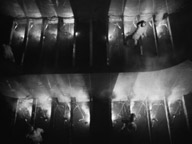 Building Massive Ships
Building Massive Ships
(Kyodaisen o tsukuru)- Circa 1967 / Japanese / Color / Video (Original: 35mm) / 29 min
Director, Script: Matsuo Ichiro
Production Company: Shu Taguchi Productions
Source: PorQue’ Inc.
A film by Shu Taguchi Productions, managed by Taguchi Yasushi. The film follows production of a massive tanker at Mitsubishi Heavy Industries. The calm imagery is full of strength, and the film brims with Japanese confidence during the era of rapid economic growth.
